Your Dog’s Digging Holes? Here’s What They’re Actually Trying to Tell You
I’ve spent more than two decades working with dogs, from sweet family companions to intense working breeds, and if there’s one universal truth, it’s this: dogs dig. It’s not them being naughty or trying to spite you. Honestly, it’s as natural to them as barking at the mail carrier or wagging their whole body when you get home.
In this article
I’ll never forget a client who had two adorable Jack Russell Terriers. Their yard, once a pristine patch of green, looked like it had been hit by tiny, furry meteors. They were so frustrated. But the moment we stopped focusing on the holes and started trying to understand the dogs, everything changed. The solution wasn’t about punishment; it was about getting to the root of their instincts.
So, this guide is all about that—looking at the problem like a pro. We’re going to skip the quick fixes that never seem to last and instead figure out the ‘why’ behind all that digging. A yard full of holes is just a symptom. The real issue is almost always an unmet need. Let’s get our hands dirty and decode what your dog is trying to communicate.
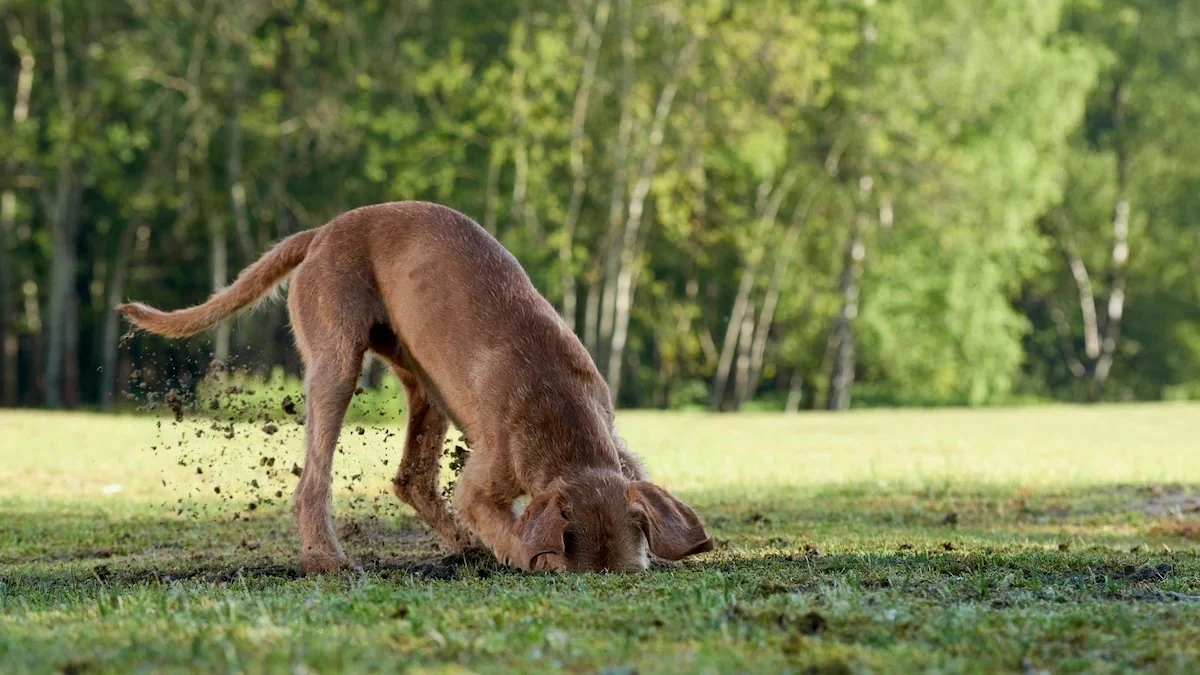
Why Your Dog Has Shovels for Paws
To really solve a behavior, you first have to respect where it comes from. Digging is baked right into a dog’s DNA. For countless generations, this single skill helped their ancestors survive and thrive. Understanding this backstory shifts your perspective from being a frustrated owner to an informed partner. It’s the difference between just patching a leaky pipe and actually fixing the high water pressure that caused the leak in the first place.
An Ancient Survival Skill
At its heart, digging served a few critical purposes for wild canines:
- Making a Home (Denning): A dug-out den provides a safe, insulated spot to rest and raise puppies, hidden from predators and sheltered from brutal weather. This is often why you’ll see pregnant dogs or dogs seeking a secure spot start “nesting.”
- Saving a Snack (Food Caching): Wild dogs would bury leftover food to keep it safe from scavengers. They knew exactly where to return later for their meal.
- Hunting for a Meal: A lot of prey—think voles, moles, and groundhogs—live underground. Digging is the only way for a predator to get to them. This instinct is still incredibly powerful in certain types of dogs.
- Getting Comfy (Temperature Control): On a blazing hot day, the soil just a few inches down is significantly cooler. Dogs dig shallow pits to create a personal, air-conditioned spot to relax. The same logic applies in the cold, where a hole can offer a nice shield from biting wind.
When your dog starts excavating your petunias, they aren’t being bad. They’re just following one of these ancient scripts. Our job is to figure out which one.
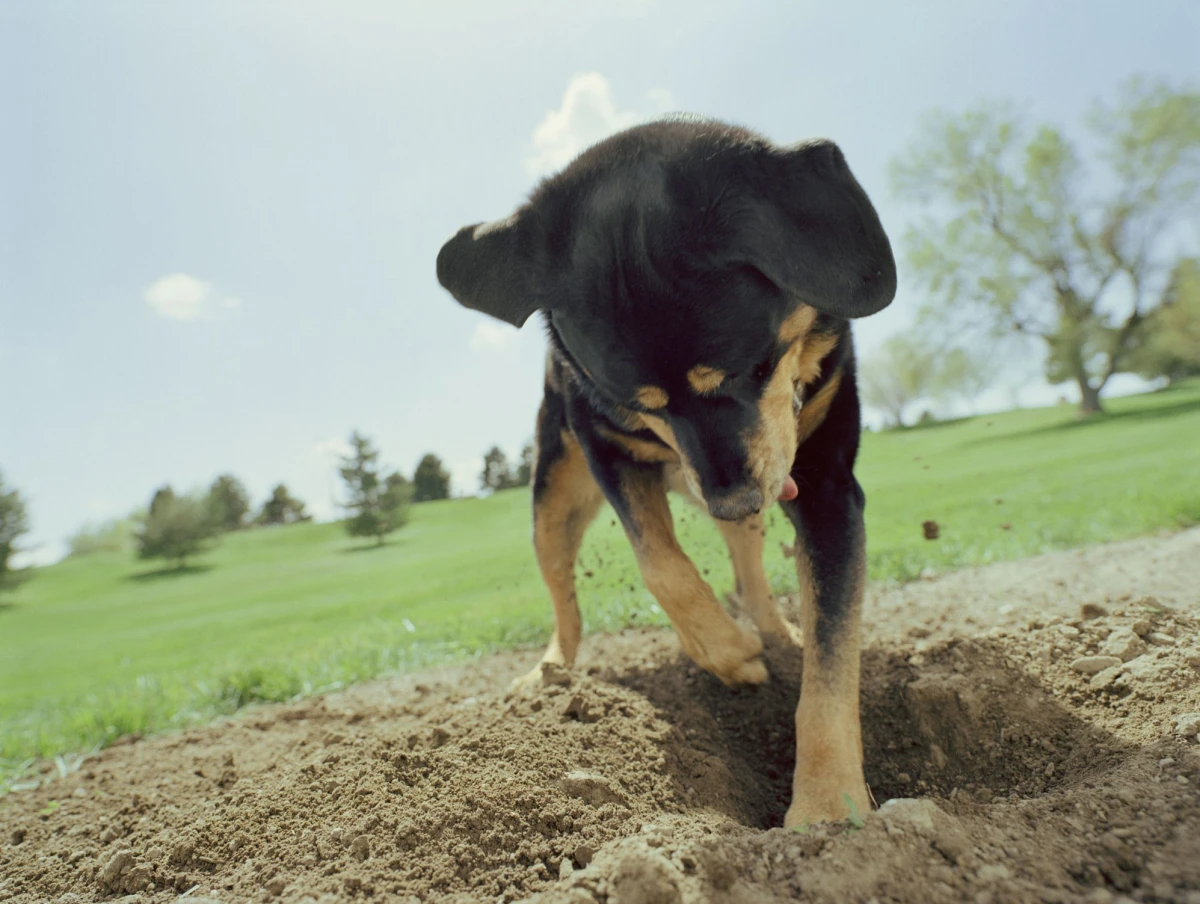
Does Breed Matter? Oh, Yeah.
While any dog might get the urge to dig, selective breeding has cranked this trait up to eleven in certain groups. If you own one of these breeds, managing digging is just part of the deal. It helps to think about what the dog’s original “job” was.
- Terriers (like Jack Russells and Scotties): The name ‘terrier’ literally comes from ‘terra,’ the Latin word for earth. These guys were bred to go to ground and hunt vermin in their burrows. For them, digging isn’t a hobby; it’s a calling.
- Dachshunds: Their name is German for ‘badger dog.’ Their long bodies and strong, paddle-like paws are custom-built for going underground after some seriously tough opponents.
- Northern Breeds (like Huskies and Malamutes): These dogs often dig for two reasons: to carve out a cool pit to lie in when it’s hot, or to find shelter from wind and snow when it’s cold. They are also notorious for digging under fences to go exploring.
- Hounds (like Beagles): Driven by their incredible noses, a hound might track a rabbit’s scent right to its burrow and then immediately start digging to follow it.
Knowing your dog’s background gives you a massive head start. You’re not trying to erase their nature, but you do need a plan to channel it somewhere appropriate.
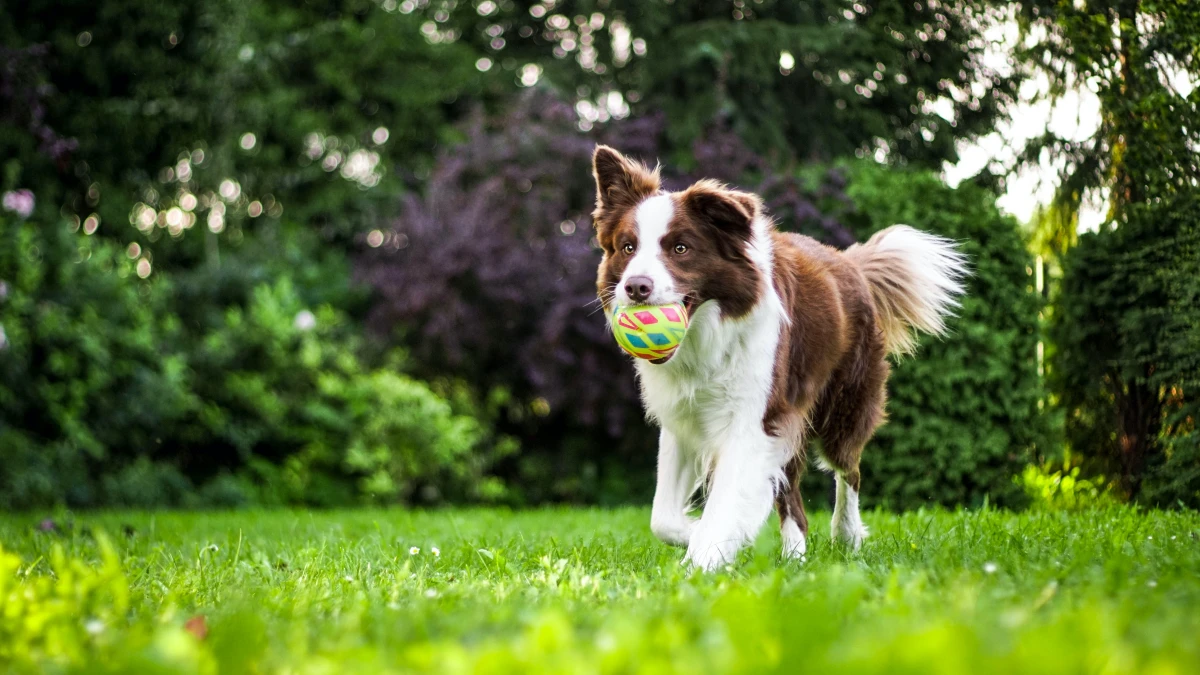
Your Mission: Become a Digging Detective
Before you can fix the problem, you need an accurate diagnosis. I always tell my clients to become observers, like a detective at a crime scene. The clues are right there in your yard and in your dog’s body language. For one week, try keeping a simple log. Just note the time of day, location, and even the weather when the digging happens. You’ll be surprised what the patterns reveal.
Digging Detective Checklist
So, where do you start? Ask yourself these questions:
- Where are the holes? The location is your biggest clue. If they’re popping up along the fence line, it’s almost always an escape attempt. Your dog might be bored, lonely, or trying to get to that squirrel taunting them from the other side. Holes at the base of trees or shrubs often point to hunting, as your dog can smell critters in their root tunnels.
- What do the holes look like? Are they shallow, body-sized pits in shady, protected areas (like under the deck)? That’s your dog trying to get comfortable and cool down. A random scattering of holes in the middle of the lawn often screams boredom. A dog with pent-up energy will invent their own fun, and digging is a great workout.
- Is it in a specific spot, like the garden? If the digging is focused on your vegetable garden or flower beds, it could be a couple of things. The loose, rich soil is just plain fun to dig in, but sometimes they’re also attracted to the smell of organic fertilizers like bone meal.
- How is your dog acting? Watch their body language. Frantic, anxious digging can point to stress. Focused, intense digging with pauses to listen? That’s pure hunting mode. And if it’s playful, maybe with a play bow or dirt flying everywhere? That’s just a dog having a good time and burning off steam.

Practical Solutions for Every Type of Digger
Once you have a solid theory about why your dog is digging, you can finally pick the right strategy. Consistency is everything here; it takes time to redirect a behavior that feels so natural to them.
For the Bored Dog: A Tired Brain is a Happy Brain
Many people think a long walk is the ultimate fix for a high-energy dog. And while exercise is great, mental work—or enrichment—is what truly satisfies a dog’s mind and curbs problem behaviors. I once worked with a young Border Collie who was digging craters in the yard despite two long runs every single day. The owners were exhausted, but the dog was just getting started. The problem wasn’t a lack of exercise; it was a lack of a job.
Actionable Enrichment Ideas:
- Quick Win You Can Do Today: Stop feeding your dog from a bowl. For their next meal, scatter their kibble in the grass or dump it in a cardboard box with some crumpled paper. It takes you two minutes and immediately gives their brain a puzzle to solve.
- Introduce Scent Work: A dog’s nose is their superpower. Hiding high-value treats around the house or yard and letting them sniff them out is incredibly rewarding. Fifteen minutes of focused sniffing is often more tiring than a 30-minute run.
- Invest in Food Puzzles: Toys like a classic Kong, a West Paw Toppl, or a snuffle mat make your dog problem-solve for their food. Expect to pay between $15 and $30 for a good quality toy, but it’s a small investment that can save your lawn. A quick tip: on Sunday, prep and freeze a week’s worth of stuffed Kongs. Just grab one from the freezer when you’re busy!
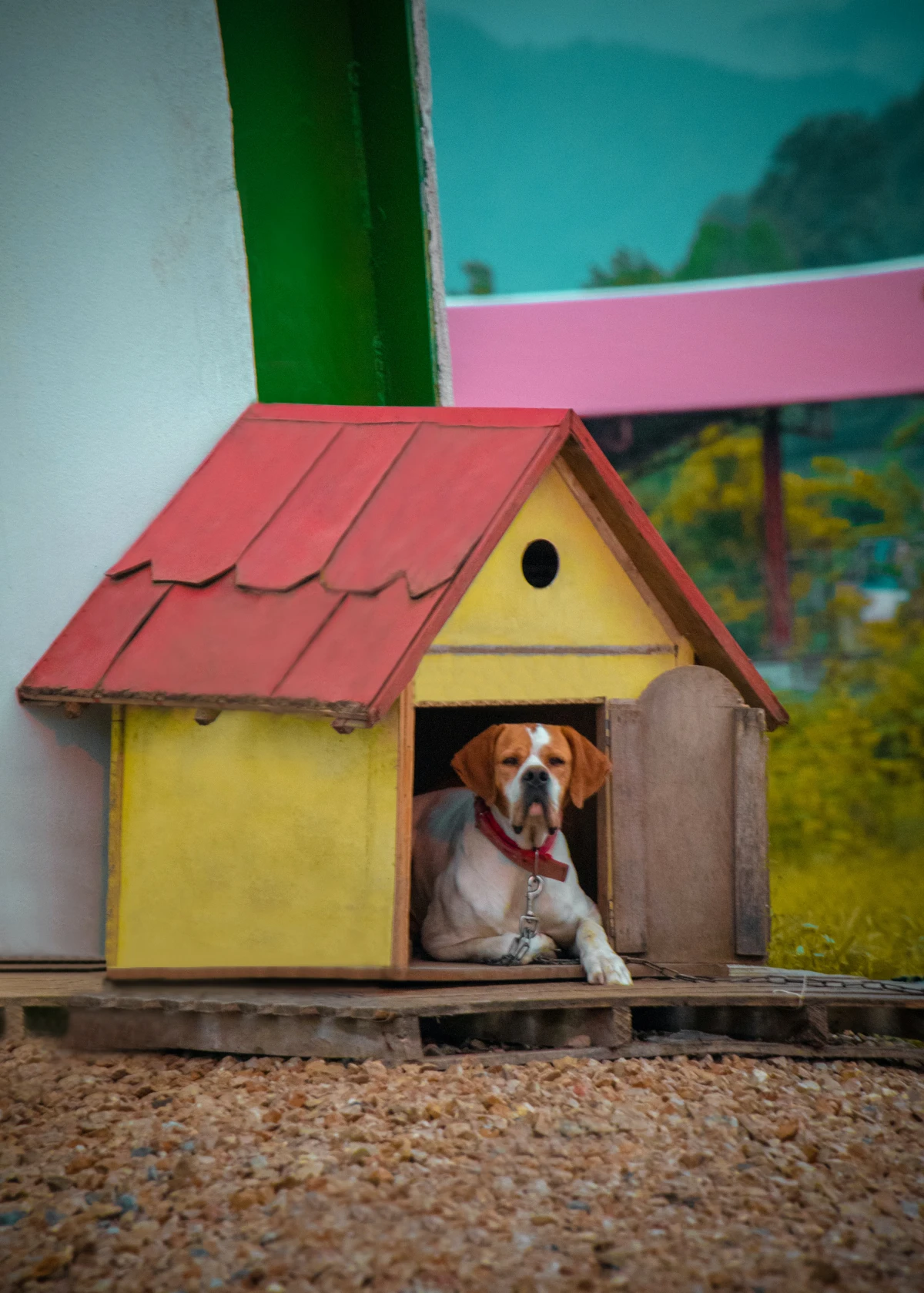
For the Hunter: Manage the Critters, Not the Instinct
If your dog is digging for moles or voles, you’ll never win by scolding the dog. The drive to hunt is just too powerful. The real solution is to make your yard less appealing to the critters in the first place.
Heads up! Voles, by the way, create little runway-like paths in the grass, while moles leave those classic raised tunnels of earth. Gophers create crescent-shaped mounds of dirt next to a plugged hole.
Dog-Safe Pest Control:
- The last thing you want is to put down a poison that could harm your own dog. Instead, look for repellents with castor oil as the main ingredient; it’s non-toxic and makes the ground taste bad to burrowing animals. You can find these at most garden centers.
- Humane traps are another option, allowing you to catch and release the animals far from your home.
- Finally, make your yard less hospitable. Keep your grass trimmed, clean up any fallen fruit or birdseed, and avoid using fertilizers that attract pests.
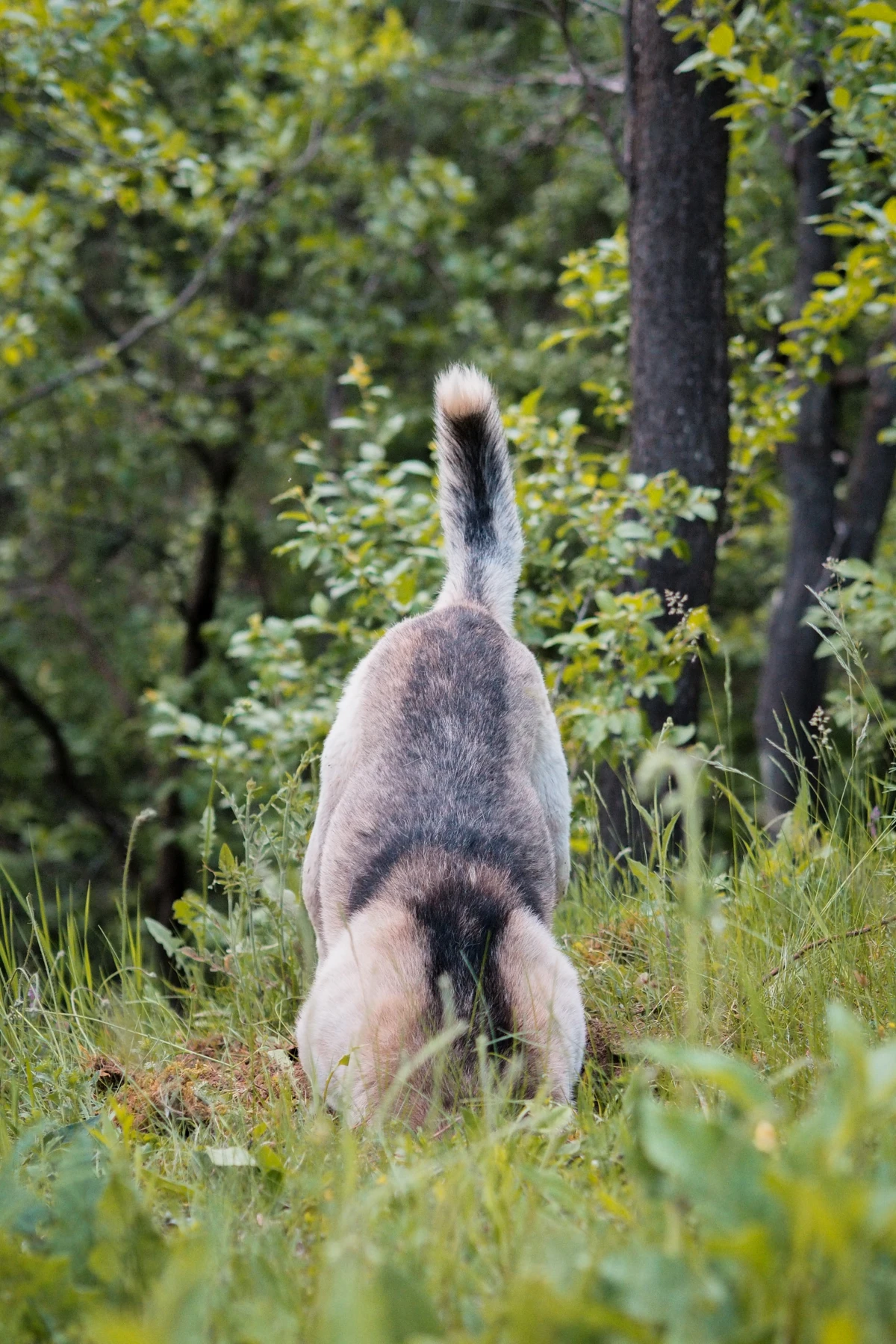
For the Escape Artist: Reinforce Your Boundaries
When digging happens exclusively at the fence line, it’s time to secure the perimeter. This is about preventing the escape, not just stopping the digging.
- A Weekend Project: A fantastic deterrent is to bury chicken wire about a foot deep along the base of your fence. The key is to bend the bottom edge of the wire into an “L” shape facing into the yard. When your dog tries to dig down, their paws will hit the wire, and they won’t be able to get through.
- Landscaping as a Barrier: Placing large, heavy rocks or decorative landscape timbers along the inside of your fence line can also physically block the most common escape routes.
For the Comfort Seeker: Offer a Better Option
If your dog is just trying to create a comfy, cool bed, the easiest solution is to beat them to it! Give them an even better spot to relax.
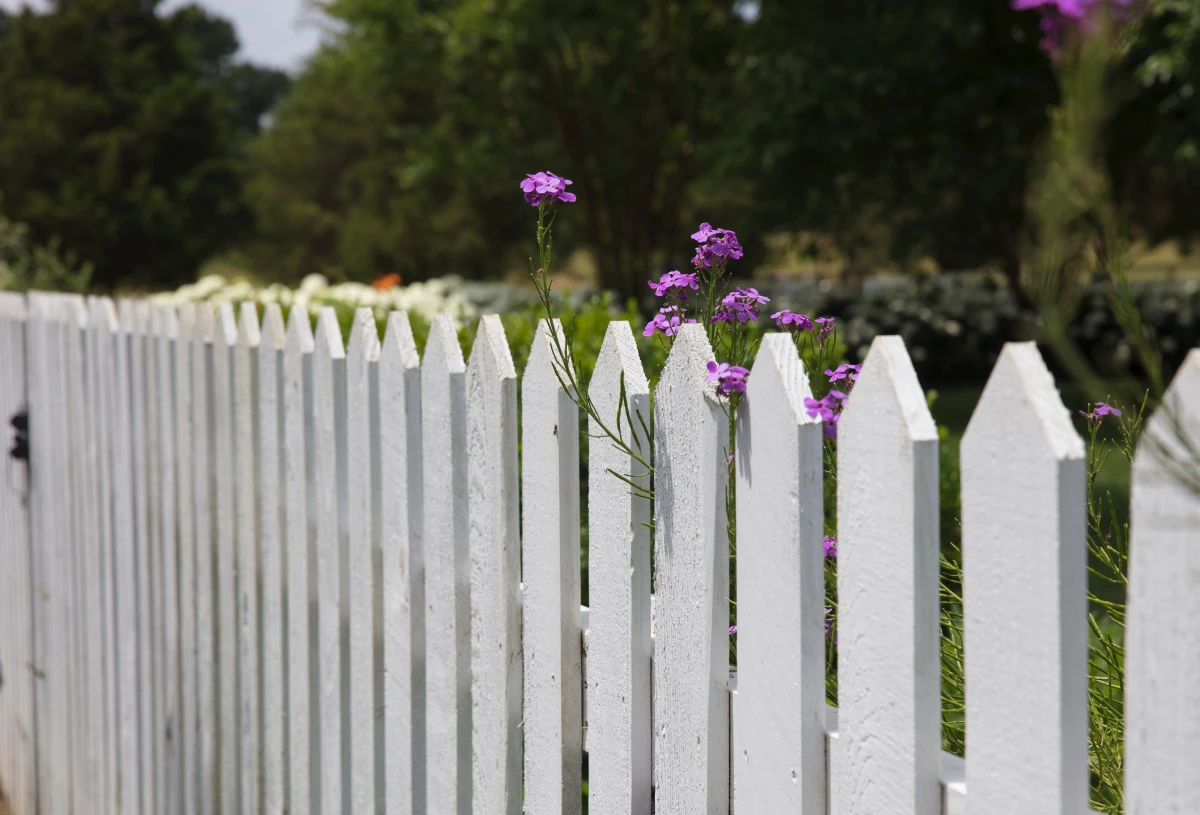
- Upgrade Their Outdoor Lounge: A raised, cot-style dog bed (like the popular Coolaroo brand, which runs about $30-$50) allows for 360-degree airflow, keeping them much cooler than a hot patch of dirt. Place it in a shady, desirable spot.
- Give Them What They Want (On Your Terms): If they seem determined to have a cool pit, you can even dig a shallow one for them in an out-of-the-way spot and fill it with nice, soft play sand.
The Ultimate Fix: A Designated Digging Zone
For die-hard diggers, the best solution is often not to stop the digging, but to contain it. A designated digging pit gives your dog a ‘yes’ instead of a constant ‘no’.
How to Build and Use a Dig Pit:
- Pick a Spot & Build the Frame: Choose an area of your yard you don’t mind sacrificing. You can build a simple frame using landscape timbers or buy a pre-made child’s sandbox. A 4×4 foot area is usually plenty big. A simple DIY setup might run you between $50 and $150 for the wood and sand.
- Fill It Up: Fill the frame with a mix of play sand and loose topsoil. You want it to be easy and satisfying for your dog to dig in.
- Make It a Treasure Chest: Now for the most important part—training. The pit is boring on its own. You need to make it the most exciting place in the yard! Bury some of your dog’s favorite toys and some high-value, smelly treats just under the surface.
- Redirect and Reward: Lead your dog to the pit and encourage them to explore. When they start digging and find a prize, praise them enthusiastically! If you catch them starting to dig in an “illegal” spot, calmly interrupt them with a cheerful “Oops!” and lead them to their pit. Encourage them to dig there, and reward them heavily when they do. With a little consistency, they’ll learn where the real fun is.
At the end of the day, remember that digging is just your dog’s way of trying to meet a need. By playing detective and providing a healthy outlet, you can save your lawn and strengthen your bond. It takes a little patience, but you can absolutely turn a frustrating problem into a productive partnership. You’ve got this.

Galerie d’inspiration
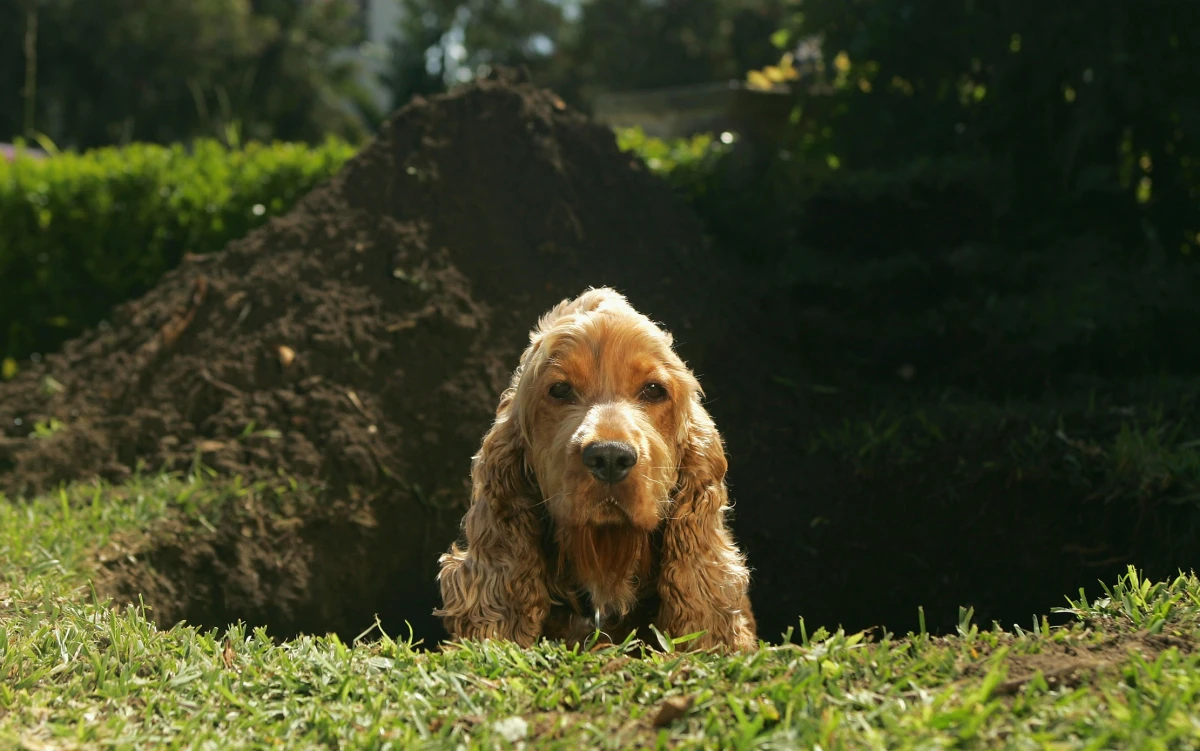
Instead of fighting the digging instinct, why not give it an approved outlet? Creating a designated ‘digging box’ can save your flowerbeds and satisfy your dog’s natural urges. It’s a win-win that turns a problem behavior into a fun, sanctioned activity.
- Build a Border: Use untreated cedar or pine boards to create a simple frame, about 4×4 feet, in a corner of your yard. This visually defines the ‘yes’ zone.
- Choose the Right Filler: Fill the box with a loose, dog-safe material. A mix of topsoil and children’s play sand is ideal, as it’s easy to dig in and free from harmful chemicals.
- Make it a Treasure Hunt: To get your dog interested, bury a few high-value toys (like a sturdy KONG) or strong-smelling treats just below the surface. Cheer them on when they dig in the right spot!










